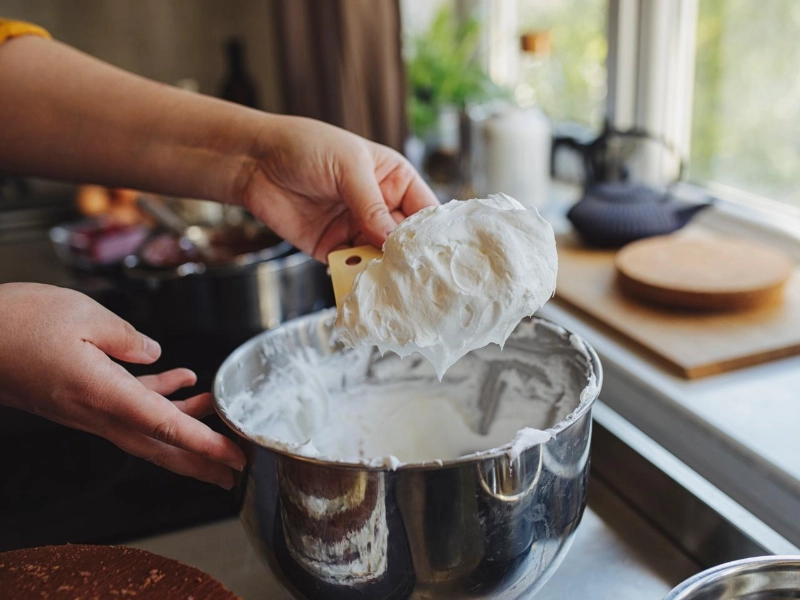Advertisement
What are the best dairy substitutes for milk in baking?
In baking, cream or half-and-half, evaporated milk, sour cream or plain yoghurt, sweetened condensed milk, and powdered milk are the finest alternatives for milk. Go on to learn more specifics about every.
1. Cream or Half-and-Half

Advertisement
Two of the most flexible dairy substitutes for milk in baking are cream and half-and-half, which have rich flavours and textures that could improve a range of recipes. Renowned for its high fat content, heavy cream gives baked items a luscious texture and greatly increases their richness. One should take careful consideration of thickness when substituting heavy cream for milk. Diluting strong cream with water can help you to get consistency like that of milk. Sixty percent cream to forty percent water is a frequent ratio that preserves the proper texture without sacrificing taste. This dilution lets bakers still get the required liquid consistency needed for many recipes while yet enjoying the creamy richness of heavy cream.
For those trying to substitute half-and-half, a combination of equal parts whole milk and cream, is also rather good. Its modest fat level offers a creaminess that might improve the taste of muffins, cakes, and other baked goods. Using half-and-half has one benefit in that it can be replaced for milk in equal amounts without any diluting necessary. For instance, you might only use one cup of half-and-half if a recipe calls for one cup of milk. Bakers will find it simple to modify their preferred recipes using this basic substitute without major changes.
But it's important to pay attention to the kind of heavy cream or half-and-half used as certain brands could have stabilisers or additives that change the flavour and texture of baked products. These stabilisers can influence the mixing of the components and cause unanticipated effects on the resultant product. For best results in baking, then, choose premium, pure heavy cream or half-and-half.
Especially in sweets like cheesecakes, custards, or creamy sauces, using cream or half-and-half in recipes can produce a luxurious experience. These dairy products' richness helps to accentuate flavours, therefore improving their appeal. Apart from sweet delicacies, cream and half-and-half can also be used in savoury meals such sauces, casseroles, and creamy soups, thereby offering variety in the kitchen. This flexibility lets bakers play about with various flavour combinations, producing distinctive delicacies.
Using cream or half-and-half also has effects on baking times and temperatures. Because of their more fat, baked products created with these replacements could need minor changes in cooking times. Watch your products closely as they bake to make sure they neither overcook or undercook. For example, cakes prepared with heavy cream bake faster than those made with standard milk; thus, a few minutes early doneness check helps to avoid dryness.
Moreover, the use of cream or half-and-half can improve the nutritional profile of your baked products, therefore adding more calories and fat that might be helpful for people wanting more energy. To preserve general healthfulness, though, it is imperative to balance these elements with other recipe ingredients. Including cream or half-and-half into baking recipes will produce great results and provide depth and richness that improves the whole enjoyment of the meal.
